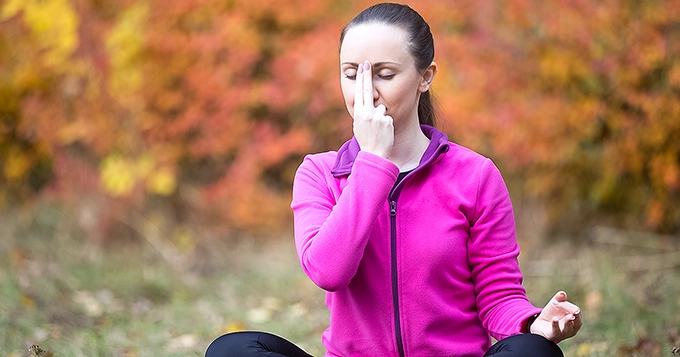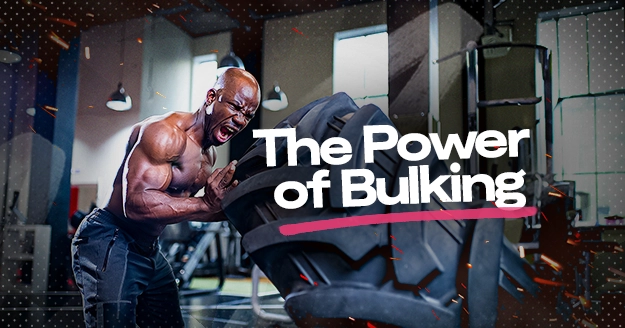Breathwork might not be the first thing that comes to mind when you think about improving your athletic performance.
However, breathing exercises for athletes are a game-changer that can take your abilities to the next level. In this article, we’ll explore how and what effective breathwork techniques can elevate your performance and help you reach your fitness goals.
What is the purpose of breathing exercises?
Breathwork, a traditional practice now gaining popularity in sports, significantly enhances athletic performance. It’s not just about breathing; it helps the body and mind. By improving oxygen intake and keeping stress low, athletes are finding new ways to perform better. Here’s how breathwork enhances athletic performance:
- Enhanced Oxygen Intake
Conscious breathing is crucial for endurance sports because it helps optimize how much oxygen your lungs take in. This is especially critical for activities that demand sustained effort over extended periods.
Techniques like rhythmic breathing make sure your lungs get more air, which boosts how much oxygen you get and gets rid of more carbon dioxide. This not only boosts your endurance and stamina but also helps keep your energy up during the activity. Better oxygen levels also help your body work better and make more energy, which is really important for keeping up with long workouts.
- Improved Focus and Concentration
The benefits of breathing exercises include helping athletes stay mentally sharp and focused, which is super important during competitions or training. Techniques like mindfulness or meditation breathing help athletes concentrate better by centering their attention and cutting out distractions.
This intense focus really matters in sports when every second counts and a small distraction can make a big difference. Plus, regular breathwork practice strengthens the connections in your brain related to focus, making it easier to stay concentrated for longer periods.
- Stress reduction
Regular breathwork practice acts as a powerful tool for managing stress, offering significant advantages in competitive sports. Techniques like diaphragmatic breathing and long exhale breathing trigger your body’s relaxation mode, which helps lower the stress hormone cortisol.
This not only calms you down right away but also keeps your emotions in check, making it less likely for stress to mess with your performance. For athletes, staying cool and collected under pressure is super important, and breathwork is the key to reaching that mental balance.
- Increased lung capacity
Deep belly breathing and other breathwork techniques are important for athletes because they help improve lung capacity and endurance. When athletes practice deep breathing regularly, they can make their lungs hold more air, which makes their breathing more efficient. This is especially useful for sports like long-distance running, swimming, or cycling, where having a strong aerobic capacity is key.
With better lung capacity, muscles get more oxygen during intense workouts, which helps athletes last longer and fight off fatigue. Plus, good breathing habits also help with posture and core stability, making overall athletic performance even better.
- Regulated blood pressure
Breathwork is crucial for post-exercise recovery. Slow, deep breathing techniques lower your heart rate and induce relaxation, aiding your body’s recovery process. This relaxation response is essential for relieving muscle tension and soreness, helping tired muscles recover faster.
Additionally, effective breathwork boosts activity in your parasympathetic nervous system, responsible for your body’s relaxation functions. This activation is vital for post-exercise recovery, as it supports muscle repair, replenishes energy levels, and restores overall balance to your body.
- Better recovery
Breathwork is crucial for recovery after exercise. Techniques that focus on slow, deep breathing can help bring down your heart rate and relax you, which is awesome for helping your body recover. This relaxation response is key for easing muscle tension and soreness, helping tired muscles bounce back faster.
Plus, good breathwork can boost activity in your parasympathetic nervous system, which handles your body’s cool-down functions. This activation is important for recovery after exercise because it helps repair and rebuild muscles and refuel your energy.
- Increased Body Awareness
Breathwork encourages a deeper connection between your mind and body, enhancing proprioception and body awareness. As you become more aware of your breathing and its effects on your physical sensations, you’ll gain insight into your movement patterns, posture, and areas of strength and weakness. This heightened body awareness can help you fine-tune your technique, prevent injuries, and optimize your overall athletic performance.
- Regulation of Energy Levels
Regulating energy levels throughout your training sessions or competitions is one of the benefits of breathing exercises.
By mastering techniques such as rhythmic breathing or breath control, you can control how much energy you use and sustain peak performance for extended periods of time. Whether you need a burst of energy to sprint towards the finish line or a steady pace for endurance activities, breathwork allows you to adapt and optimize your energy output accordingly.
How to Do Breathing Exercises
Breathing exercises are easy and effective ways to improve your general health and sports performance that you can implement into your everyday routine. Here’s a step-by-step guide on how to perform breathing exercises effectively:
Step 1: Find a Quiet Space
Choose a comfortable and quiet environment where you can focus without distractions. Make sure your shoulders are relaxed and your spine is straight as you sit or lie down.
Step 2: Deep Belly Breathing
Start by putting one of your hands on your abdomen and the other on your chest. Breathe deeply through your nose, allowing your abdomen to expand as air fills your lungs. Feel your diaphragm move downward as you breathe in.
Step 3: Exhale Slowly
Exhale slowly and completely through your mouth, gently drawing your navel towards your spine to release all the air from your lungs. As you breathe out, feel your abdomen contract.
Step 4: Focus on the Breath
As you continue to breathe deeply, focus your attention on the feeling of air entering and leaving your body. Notice how your abdomen rises and falls with each breath.
Step 5: Maintain a Rhythm
Establish a steady rhythm of breathing, with each inhalation and exhalation lasting for a count of four or five seconds. Aim for a smooth, continuous flow of breath without any pauses or interruptions.
Step 6: Practice Relaxation
As you engage in deep breathing, allow your body to relax fully. Release any tension or tightness in your muscles, starting from your head to your toes.
Step 7: Repeat Regularly
Set aside time each day to practice breathing exercises, ideally incorporating them into your warm-up routine or post-workout cooldown. Consistency is needed to reap the benefits of breathwork.
What are Some Breathing Exercises?
You can explore various breathing exercises to improve your athletic performance and overall well-being. Here are some popular breathing exercises for athletes:
Diaphragmatic Breathing (or Deep Belly Breathing): This exercise involves breathing deeply into your abdomen, allowing your diaphragm to fully engage. It’s a foundational technique for enhancing oxygenation and relaxation.
Box Breathing: Inhale deeply for four seconds, hold it for another four, gently exhale for four, and then hold your breath for another four seconds before beginning the next cycle. Repeat this pattern several times, focusing on maintaining a balanced rhythm.
Alternate Nostril Breathing: Close one nostril with one of your thumbs and inhale deeply through the other nostril. Then, close your other nostril using your ring finger and exhale through the first nostril. Continue alternating nostrils with each breath, aiming for a smooth, controlled flow.
4-7-8 Breathing: Take a deep inhale through your nose for four seconds, hold it for seven, and then gently release it through your mouth for eight seconds. This method helps reduce tension and anxiety while encouraging relaxation.
Breath Control During Exercise: Practice synchronizing your breath with specific movements during workouts. For example, inhale during the eccentric phase (e.g., lowering a weight) and exhale during the concentric phase (e.g., lifting a weight) to optimize energy transfer and exert
Explore these breathing exercises to discover which best align with your needs and preferences. Incorporate them into your training routine to experience the transformative benefits of breathwork on your athletic ability and overall performance.









